Clay pots are a favorite among gardeners, but they require regular care to maintain their good condition. Learning how to clean clay pots will extend their life, prevent disease, and keep them looking fresh for the next growing season.
Over time, minerals, salts, and residue can build up. This can affect both the appearance of the pots and the health of your plants.
The good news is that cleaning clay pots is simple and can be done with basic household supplies. A combination of soaking, scrubbing, and disinfecting removes dirt, mineral deposits, and harmful pathogens. With the right steps, you can restore your pots so they are safe and ready for new plants next spring.
In this guide, you will learn practical methods to clean and sterilize terracotta pots. Whether you prefer vinegar, baking soda, or a mild bleach solution, each approach helps to keep your pots in top shape. By following these steps, you’ll protect your plants and make your containers last season after season.
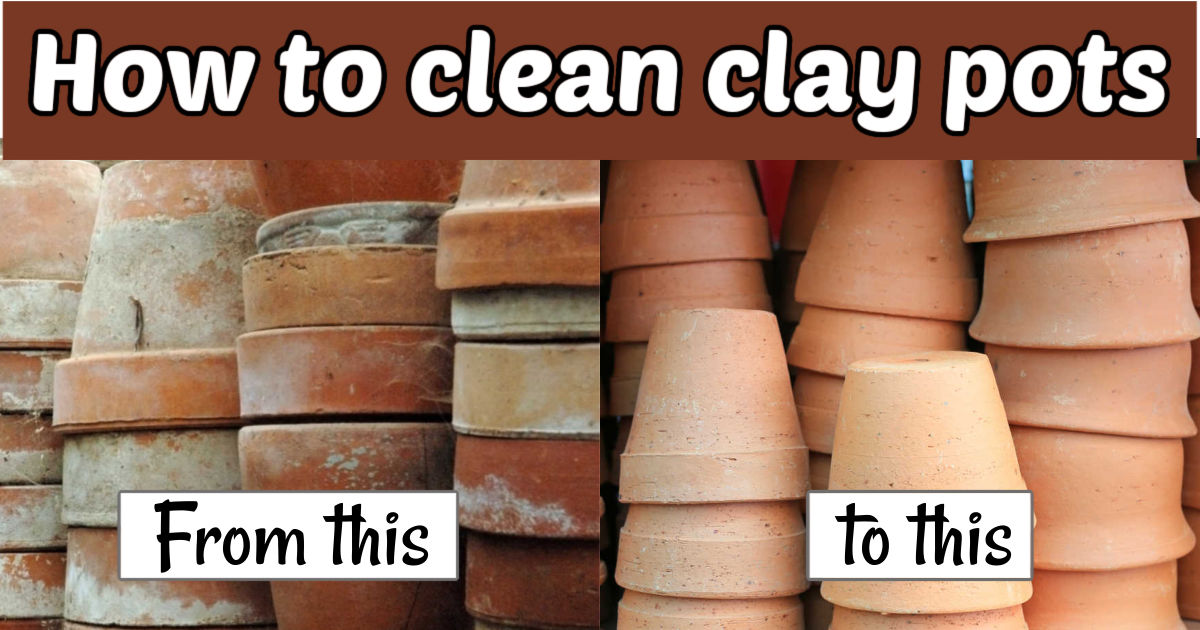
The Gardening Cook is a participant in the Amazon Affiliate Program. This post may contain affiliate links. I earn a small commission, at no extra cost to you if you purchase through an affiliate link.
Why do clay pots need to be cleaned?
Terra cotta clay pots are a great choice when it comes to patio decor. They breathe well, help to keep the soil moist but not soggy, and prevent plants from overheating.
However, clay pots can look tired and worn by the end of the fall gardening season and often need a good dose of TLC to get them in good shape for next year.
The reason that this job is so necessary is the clay itself. Clay pots absorb minerals from the soil. They also absorb chemicals from any fertilizer you might use.
They need to be cleaned and sterilized at the end of each season to keep from spreading these absorbed particles to new plants. Cleaning clay pots also helps to rid the threat of spreading fungus or mold, which can infect new plants and damage the pots themselves.
Cleaning clay pots is easier than you might think. It really doesn’t take much time to give a new lease of life to your crusty old terracotta pots.
Why spend money on new terracotta pots when you can save yourself tons of money with just a little elbow grease?
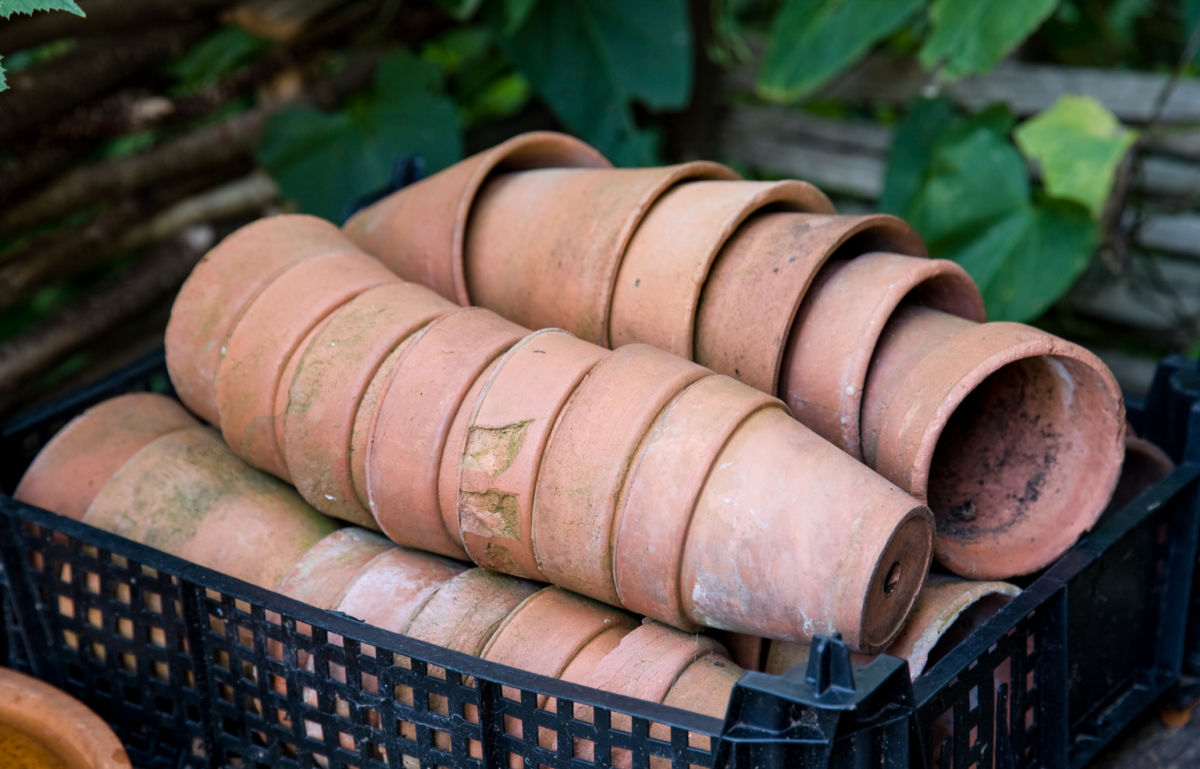
Supplies you’ll need to clean clay pots
To clean terracotta pots, you will need the following supplies:
- A stiff scrubbing brush
- 5% acidic white vinegar
- Baking soda
- Water
- Large bucket
- Rubber gloves
- Bleach (optional)
How to clean clay pots
The first step in cleaning clay pots is easy. Take any diseased or dead plant from the pot. Discard these in your compost pile.
Allow any remaining soil in the pot to dry. Use the stiff scrubbing brush to remove as much of the soil as you can from the inside of the pot.
Rinse the pot and the scrubbing brush with water.
Next, use the same scrubbing brush on the outside of the pot, removing as much of the crusty gunk as you can.
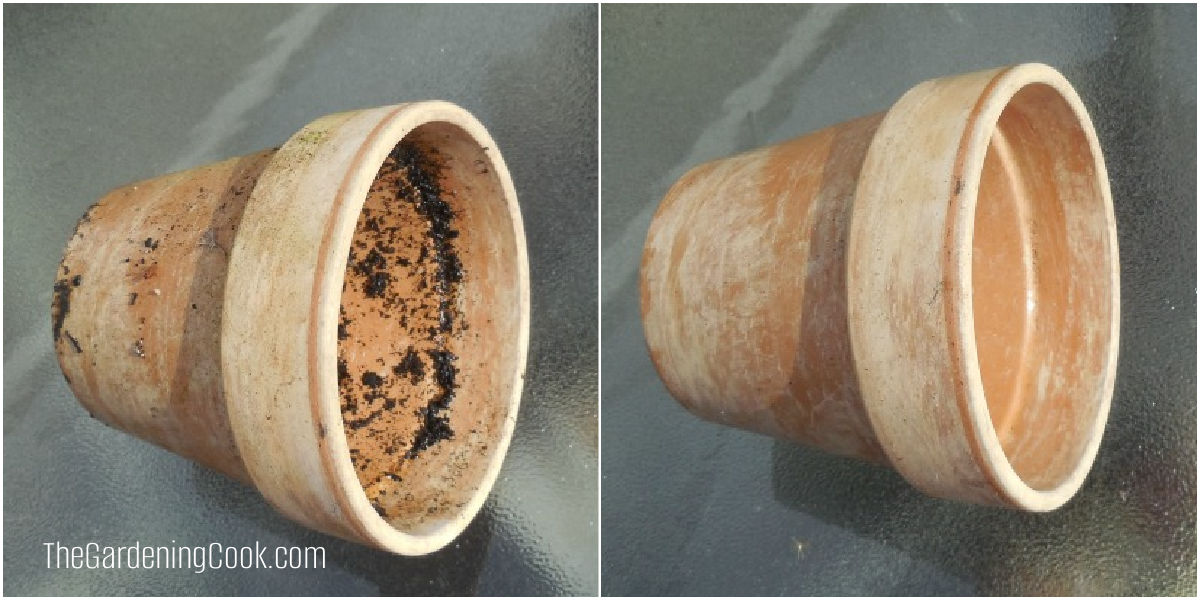
How to clean terracotta pots with vinegar
If you are lucky, this is as much cleaning as you’ll need to do. However, for those pots encrusted with built-up mineral salts, you’ll need a bit more TLC.
Vinegar is a gentle option to use for dissolving mineral deposits and the white salt crust on clay pots.
Add one cup of vinegar to 3-4 cups of water.
Soak the pots in a water/vinegar solution for 20-30 minutes.
This method is safe, non-toxic, and effective for routine cleaning. However, vinegar may not completely kill all pathogens, making it less reliable if disease prevention is your main goal.
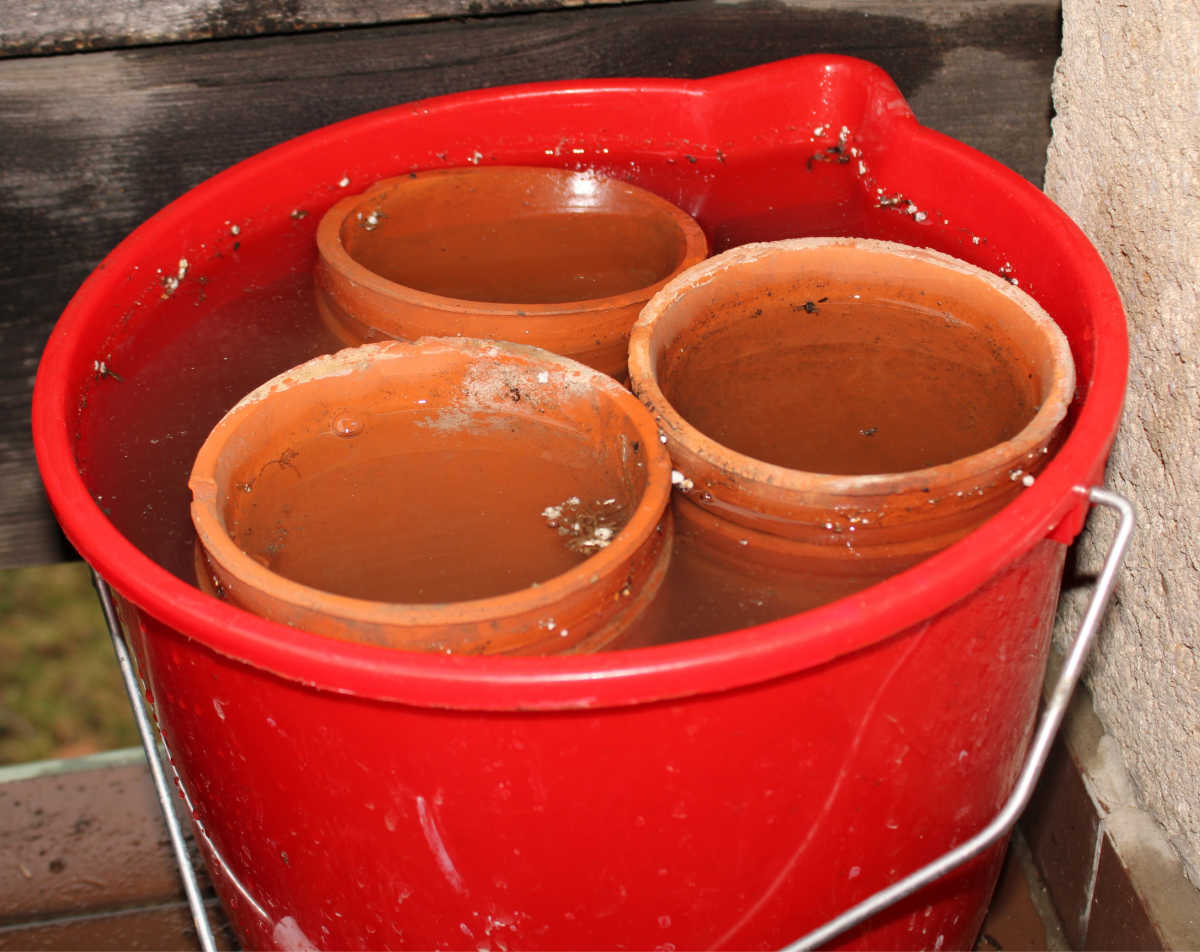
Cleaning terracotta pots with baking soda
Baking soda is a non-toxic choice that is good for scrubbing away stubborn stains or residues that are left behind after soaking.
Check the pots in the vinegar/water mixture after about 20 minutes. If the buildup is gone, the pots are finished.
For particularly stubborn salt marks, clean the pots with a paste made from baking soda and water.
Mix the baking soda into water so that the mixture resembles the consistency of hand lotion. Spread this paste over the buildup, let it sit for a few more minutes, and gently scrub the salt marks away.
Baking soda neutralizes the salts so that they come off easily. See other uses of baking soda in the garden here.
Note that while baking soda is safe to handle, it doesn’t disinfect pots. This method is best used in combination with the vinegar or bleach methods for a more complete clean.
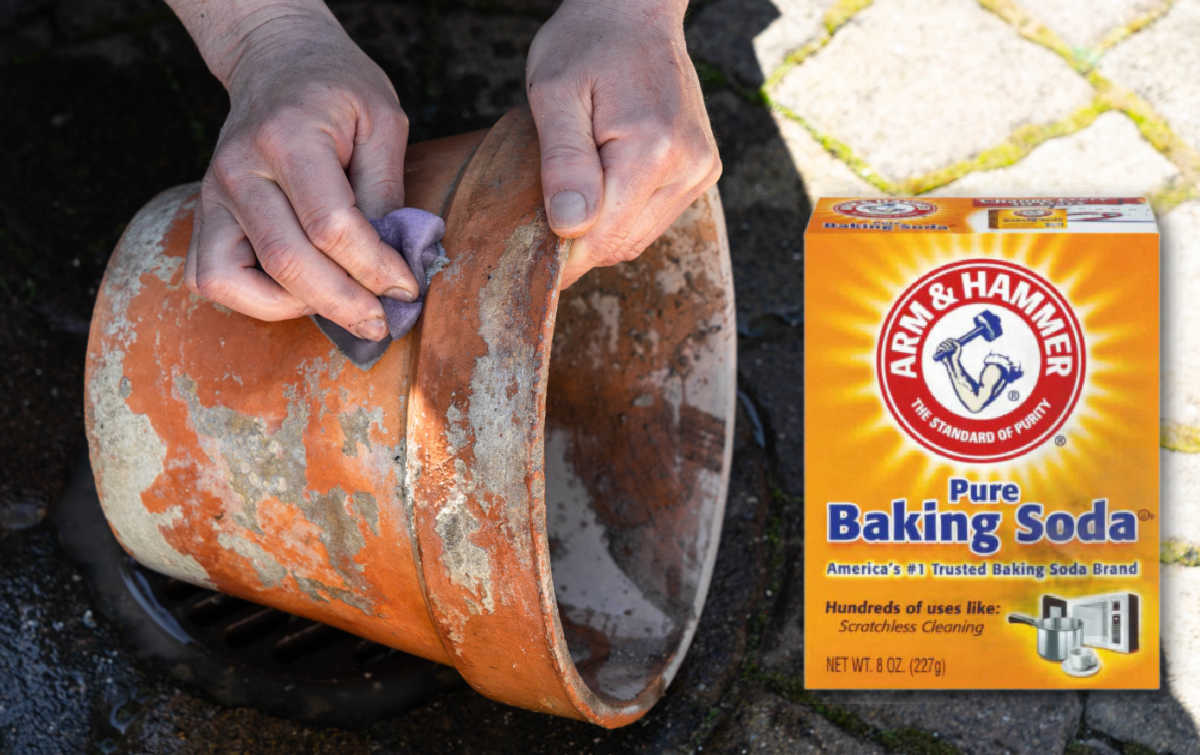
Cleaning terracotta pots with bleach
The methods outlined above will clean the clay pots, but will not sterilize them. One of the most effective ways of disinfecting plant pots is with a water and bleach solution.
Put 1 ½ cups of bleach into 1 gallon of water. (One part bleach to 9 parts water.) Let the pots soak for 30 minutes.
A note on cleaning terracotta pots with bleach: Always dilute bleach and wear gloves when working with it. Use this clay pot cleaning method in a well-ventilated area, or outdoors. Never mix bleach with vinegar or other cleaners, since this can produce toxic fumes.
After soaking pots in bleach, rinse them thoroughly with clean water to remove all traces of bleach before putting plants in the cleaned clay pots.
Bleach, vinegar, and baking soda: Which method works best?
When cleaning clay pots, there is not one method that works in all cases. Bleach, vinegar, and baking soda all have their strengths and drawbacks.
The right choice for you depends on how dirty your pots are and whether you are targeting disease prevention or general cleaning.
Here is a breakdown of the pros and cons:
Clay pot cleaning methods compared
Bleach & Water
- ✅ Strong disinfectant, kills bacteria & fungi
- ✅ Best for disease prevention
- ❌ Requires gloves & ventilation
- ❌ Must rinse thoroughly to remove residue
Vinegar & Water
- ✅ Natural and non-toxic
- ✅ Dissolves mineral deposits & salt stains
- ✅ Safe for routine cleaning
- ❌ Doesn’t fully disinfect against plant diseases
Baking Soda Paste
- ✅ Gentle abrasive for stubborn stains
- ✅ Safe and easy to handle
- ✅ Works well alongside other methods
- ❌ Not a disinfectant on its own
The chart below compares the pros and cons of each method. You can print it out as a high-definition image here.
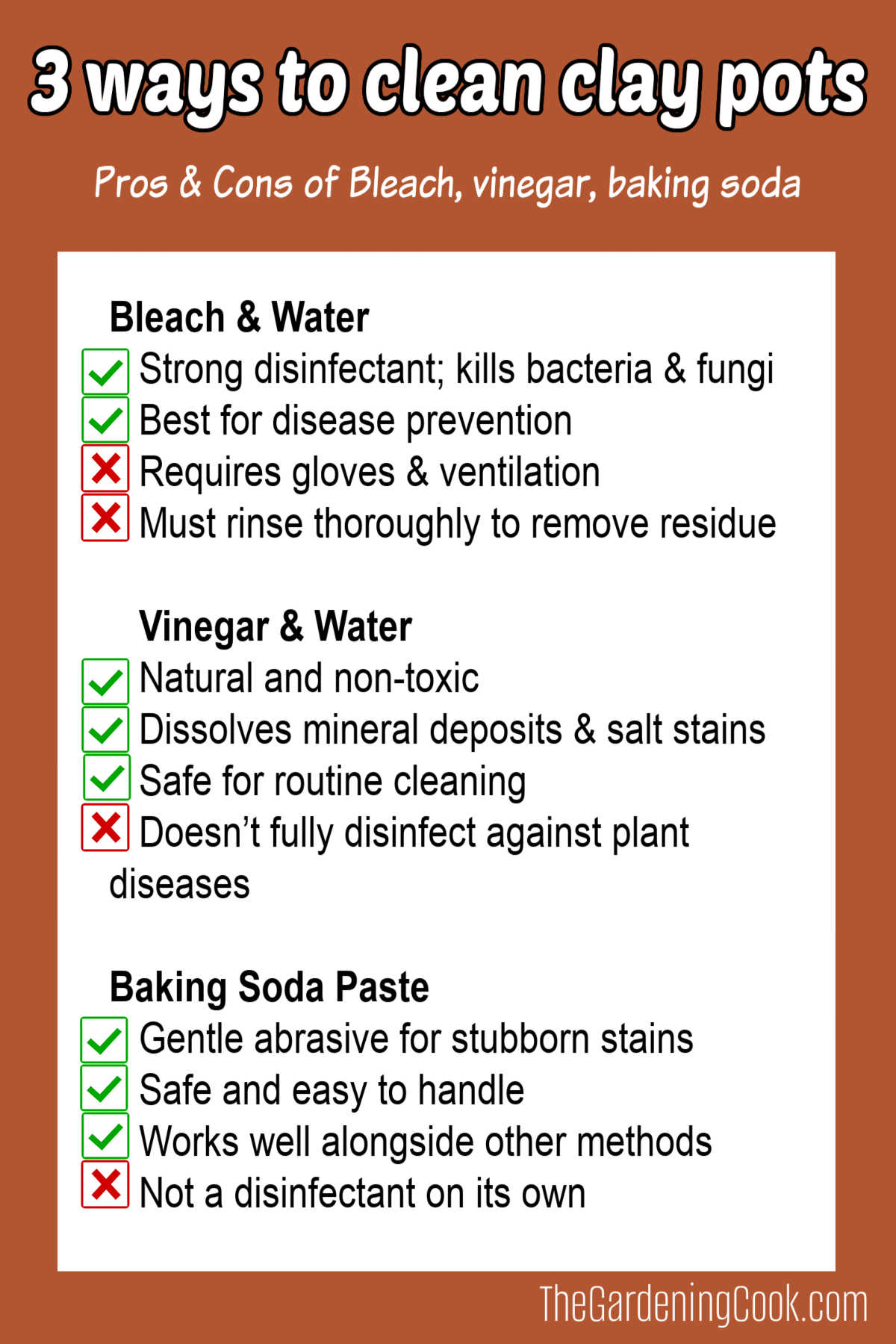
Alternative method for cleaning clay pots: Use the dishwasher
Once the pots are cleaned, you can run them through the dishwasher to sterilize them further. This will give the pots an extra dose of disinfecting.
This step is not necessary, but it helps with bacteria that might remain, which could cause diseases in your plants next year.
Storing the cleaned clay pots
Once the clay pots are cleaned, store them away from the elements. Next spring, you will have clean clay pots to replant your favorite new plants!
If you leave the pots out where the rain and snow will get to them, they will get crusty and dirty again.
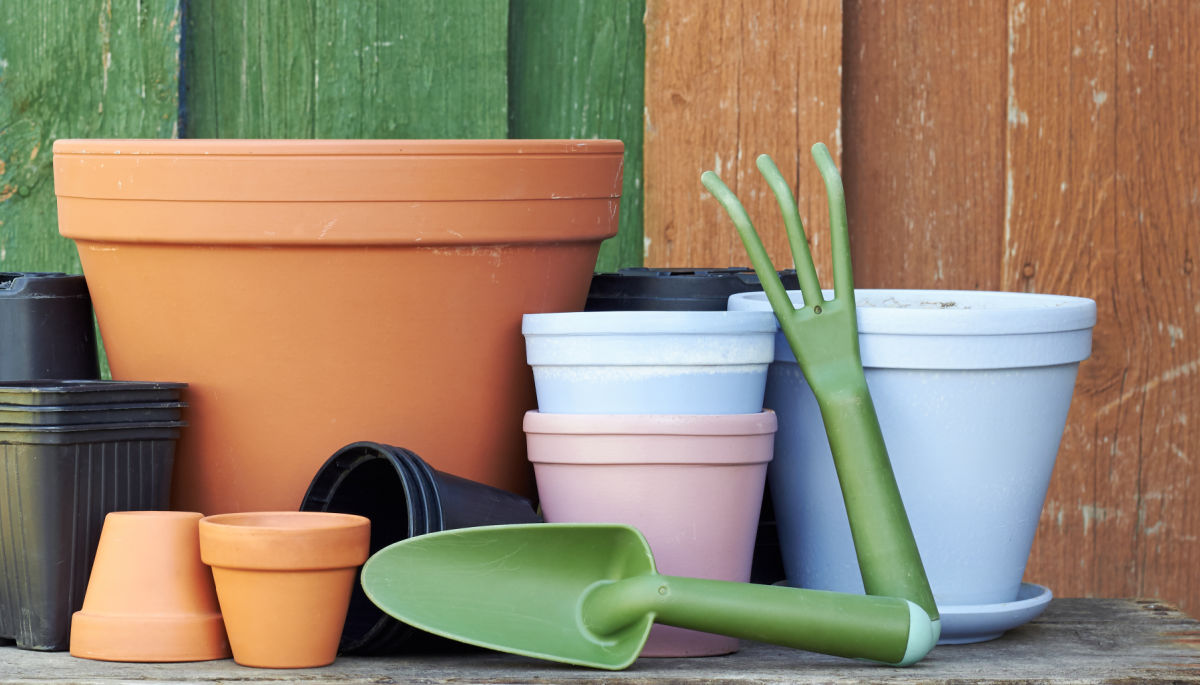
Share these tips for cleaning clay pots on X
If you enjoyed these how to clean a clay pot, be sure to share these tips with a friend. Here is a post to get you started:
🌱 Do you have some dirty clay pots? Learn how to clean terracotta pots with vinegar, baking soda, or beach. Head to The Gardening Cook for practical tips on each method.🧽✨ #GardeningTips #ClayPots #PlantCare #GardenHacks #DIYGarden… Share on X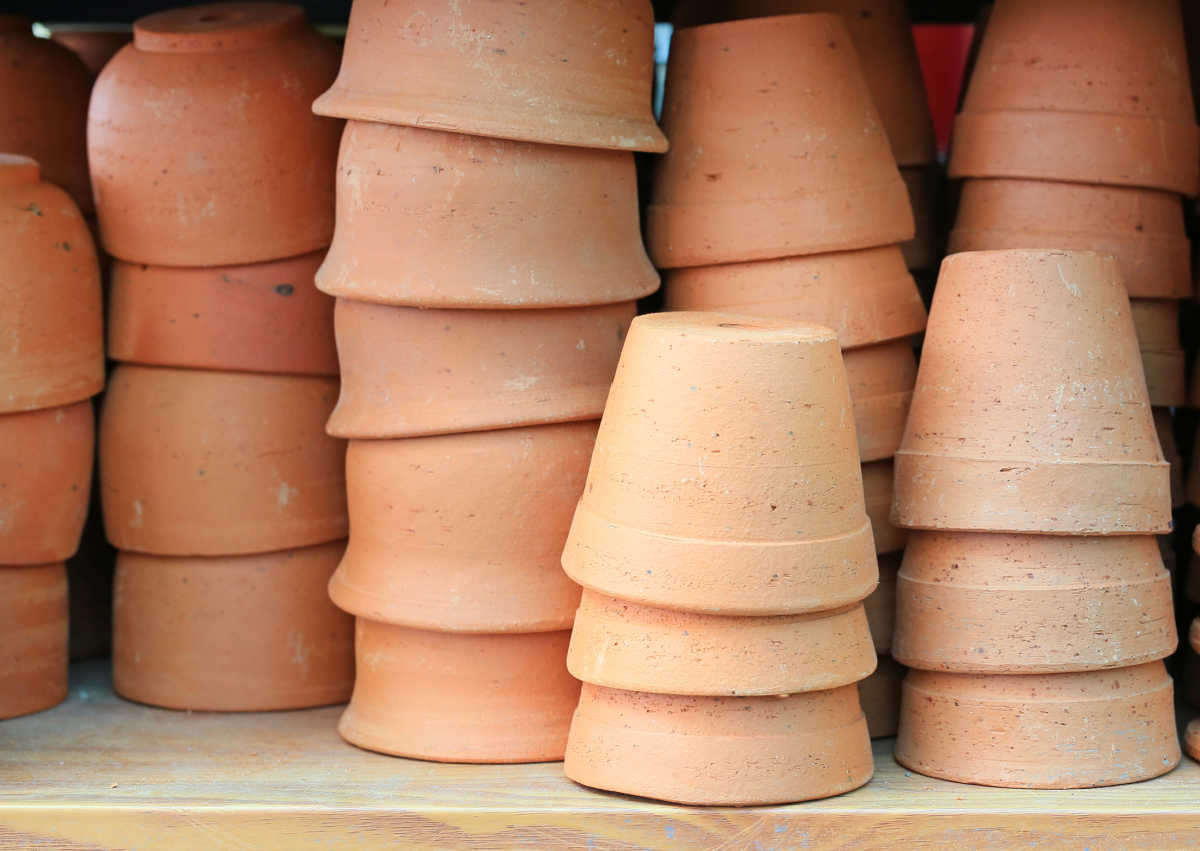
Pin this post for cleaning clay pots
Would you like a reminder of this post showing how to clean terracotta pots? Pin this image to one of your gardening boards on Pinterest so that you can easily find it later.
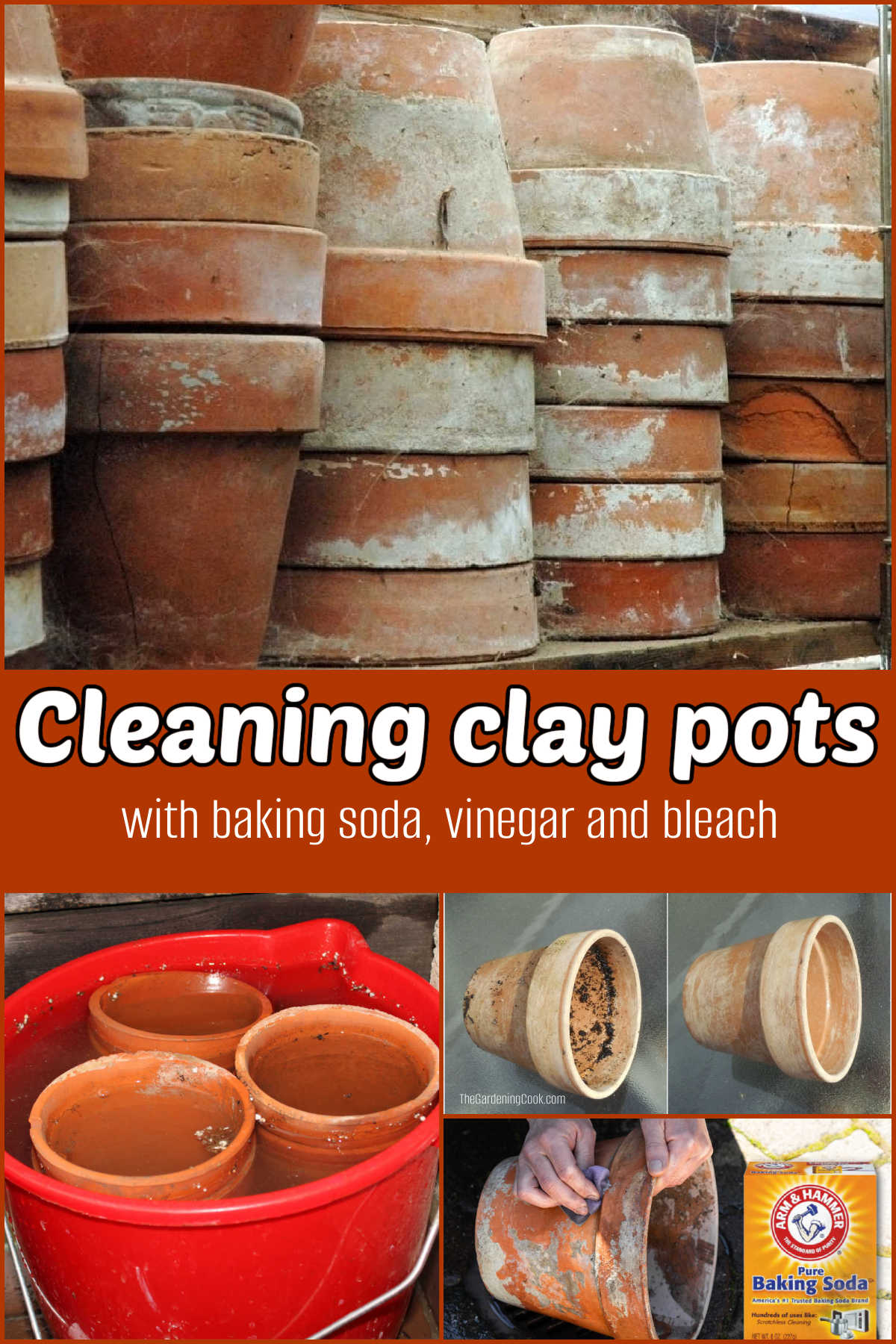
Admin note: This article for cleaning terracotta plant pots first appeared on the blog in November 2014. This post has been updated with new photos, a printable project card, and infographic.
How to Clean Clay Pots - 3 Ways
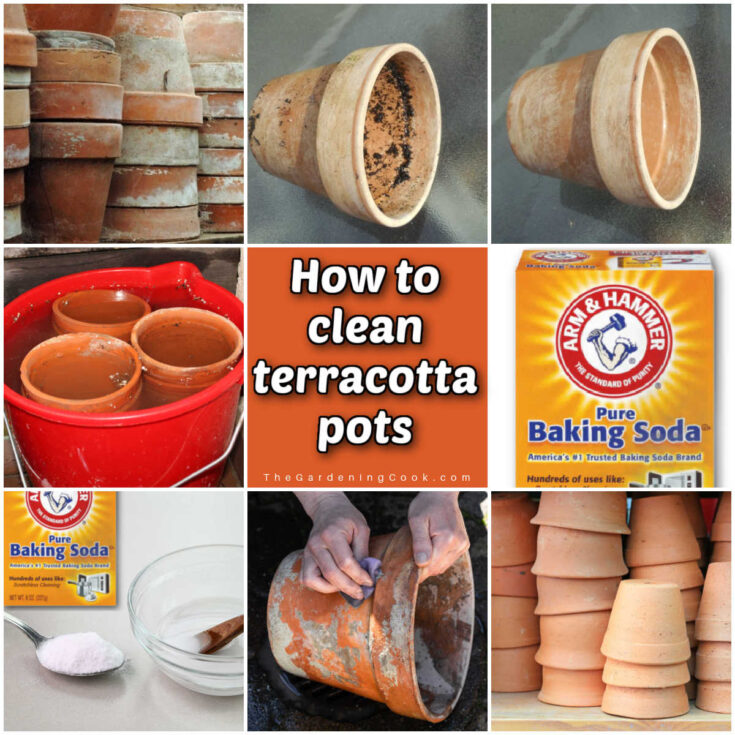
Clay pots are a versatile way to display your plants. However, at the end of the growing season, they need to be cleaned.
This tutorial shows how to do the job with vinegar, baking soda, and bleach.
Materials
- 5% acidic white vinegar
- Baking soda
- Water
- Bleach (optional)
Tools
- Large bucket
- Stiff scrubbing brush
- Rubber gloves
Instructions
- Remove any dead or diseased plants and soil from the pots. Allow the soil to dry.
- Use a stiff scrubbing brush to remove as much soil as you can from the inside of the pot.
- Rinse the pot and the scrubbing brush and allow them to dry.
- Use the brush on the outside of the pot, removing as much crusty residue as you can.
- If the pots are not too dirty, this may be enough to clean them.
- If you still have mineral deposits and white salt, you'll need more TLC.
- Add one cup of vinegar to 3-4 cups of water. Soak the pots for 20-30 minutes.
- If the buildup is gone, the pots are cleaned.
- For stubborn salt marks, mix baking soda with water into a thick paste.
- Spread this on the pots and scrub any stubborn marks.
- The pots should be clean now, but are not sterilized to remove any pathogens, which could lead to disease.
- To sterilize the pots, put 1 ½ cups of bleach into 1 gallon of water. (One part bleach to 9 parts water.) Let the pots soak for 30 minutes.
- Use rubber gloves and work in a well-ventilated area.
- After soaking pots in bleach, rinse them thoroughly with clean water to remove all traces of bleach before using them with plants.
Notes
This printable shows the pros and cons of each method of cleaning clay pots. You can also print it out as a high-definition graphic here.

Recommended Products
As an Amazon Associate and member of other affiliate programs, I earn from qualifying purchases.



Bernard Chu
Friday 15th of April 2022
I have a terracotta Bird bath. Over time black specks of mould are growing around the bowl. I tried to scrub them with steel wool but no success.
How to remove black moulds from terracotta bird bath?
Carol Speake
Friday 15th of April 2022
I have not tried cleaning a bird bath made of terracotta, however this post discusses cleaning clay pots, and might have some helpful tips in it.
joyous
Thursday 12th of August 2021
When you say, as a final step we can run our clay pots through the dishwasher, I assume we would NOT add detergent?
Carol Speake
Friday 13th of August 2021
yes that is correct
Sheila
Friday 16th of July 2021
Would it be detrimental to plants if you spray, or coat the inside of new pots with a sealing substance to keep the minerals from absorbing into them? If it is okay could you do the same to old pots you have cleaned? And what would you recommend for the sealing substance?
Carol Speake
Monday 19th of July 2021
Many commercial pots are sealed when they are purchased, so I doubt it would be detrimental to pot to seal them.
Margaret Kalton
Friday 14th of May 2021
Enjoyed your article about cleaning terracotta pots. One problem for large pots is finding a reusable, watertight container to put them in while soaking in bleachy water, for example. Any ideas?
Carol Speake
Friday 14th of May 2021
The big box hardware stores have large plastic tubs that would be good for this.
Molly
Wednesday 13th of January 2021
Can you spray the outside of the pot with some type of clear shiny stain to keep it from crumbling?